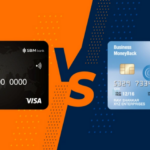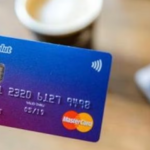Social media platforms like Facebook, Instagram, Twitter, TikTok, and YouTube use sophisticated algorithms to manage the overwhelming flow of content and personalize what appears in your feed. These algorithms are designed to boost engagement by showing users the most relevant and appealing content based on their past activity. While each platform has its unique approach, understanding the core principles behind these algorithms can help you navigate your social media experience more effectively.
This guide will explain what drives social media algorithms, how they work across different platforms, and what you can do to make them work for you.
1. Understanding the Purpose of Social Media Algorithms
At their core, social media algorithms are systems of rules and calculations designed to decide what content to show to users and in what order. Given the sheer volume of posts made every second, it would be overwhelming for users to see every single update from their connections. Algorithms aim to show you what they predict will be most relevant, interesting, or valuable to you, often prioritizing content that increases engagement, such as likes, shares, comments, or time spent on the platform.
Key Objectives of Social Media Algorithms:
- User Engagement: Platforms aim to keep users engaged, increasing the likelihood of users spending more time on the site.
- Personalization: Algorithms strive to create a customized experience based on your preferences, likes, and interactions.
- Relevance and Freshness: They prioritize recent and relevant content, filtering out posts that might not interest you or that you’ve already seen.
Each platform tailors its algorithm based on user behavior patterns, and understanding these goals helps reveal why certain content is shown more frequently than others.
2. How Algorithms Work on Major Social Media Platforms
Although every platform has its own unique algorithm, there are several common factors that influence what you see. Let’s break down the key components of algorithms on some popular platforms:
a. Facebook
Facebook’s algorithm prioritizes posts that foster meaningful interaction. It considers factors like:
- Engagement: Posts that receive more likes, comments, and shares are more likely to appear.
- Reactions and Comments: Content that encourages meaningful conversations, like long comments, is prioritized over posts with simple likes.
- Recency: Newer posts are typically shown over older ones, though engaging older posts may reappear in your feed.
In addition, Facebook allows users to customize their feed to some extent, like prioritizing updates from certain friends or pages.
b. Instagram
Instagram’s algorithm is similar to Facebook’s but also places significant weight on user interaction with different types of content, such as:
- Interest and Relationship: Posts from accounts you frequently engage with, such as by liking, commenting, or direct messaging, are prioritized.
- Recency: The algorithm tends to show recent posts first to keep content relevant.
- Time Spent: Videos that hold your attention longer are often shown more frequently.
Instagram Stories and Reels have their own engagement metrics, where consistent interaction and full-length views impact future visibility.
c. Twitter
Twitter’s algorithm works to balance recency with relevance. The platform has two main feeds: “Home” (algorithm-driven) and “Latest Tweets” (chronological order). For the algorithm-driven feed:
- Recency: Recent tweets are prioritized in both feeds.
- User Engagement: Tweets from accounts you engage with or topics you follow are more likely to appear.
- Trending Topics: Twitter also boosts content on trending topics, reflecting broader user interests.
d. YouTube
YouTube’s algorithm is highly focused on video watch time, recommending videos that will keep users on the platform longer:
- Watch Time and Completion Rate: Videos with higher watch times and completion rates are more likely to be recommended.
- User Interaction: Videos that users like, share, or comment on are favored.
- Search History and Recommendations: YouTube’s algorithm analyzes your viewing history and tailors recommendations based on these patterns.
YouTube’s algorithm prioritizes personalized content to increase viewing time, which may lead users to content that aligns closely with their interests and past behavior.
e. TikTok
TikTok’s For You page is driven by a powerful recommendation algorithm that uses machine learning to display highly relevant content:
- User Engagement and Watch Time: Content that holds your attention and videos you watch in full are prioritized.
- Video Information: Hashtags, sounds, and captions play a significant role in determining which audience a video reaches.
- Content Similarity: TikTok often serves content similar to what you’ve interacted with, creating a more personalized feed.
TikTok’s algorithm is particularly quick at learning your preferences and can tailor content recommendations within a short period of usage.
3. Key Factors Influencing Social Media Algorithms
While each platform’s algorithm varies, several universal factors influence what appears on your feed. Here’s a look at the main elements:
a. Engagement Rate
Posts with higher engagement rates (likes, comments, shares) are more likely to be shown widely. This factor plays a critical role in determining a post’s popularity across platforms.
b. User Activity and Interaction
Your activity shapes your feed. For example, Instagram shows you posts from accounts you engage with most. Similarly, YouTube recommends videos based on your viewing history. Regular interaction with certain types of content (e.g., cooking videos or sports posts) signals to the algorithm that you prefer such content, increasing the likelihood of seeing more of it.
c. Content Type
Each platform has certain content types it prioritizes:
- Short Videos on TikTok and Instagram Reels
- Visual Posts on Instagram
- Articles and Links on Facebook
Platforms boost posts that align with these content formats to encourage users to stay engaged.
d. Recency and Freshness
Newer content is generally prioritized to keep your feed fresh, but posts with high engagement may stay visible longer.
4. How to Influence Your Social Media Feed
To make algorithms work in your favor, there are several strategies you can use to influence what you see:
a. Engage More with Desired Content
Actively engaging with content you want to see more of—whether through likes, comments, or shares—signals the algorithm to show you similar posts.
b. Limit Engagement with Unwanted Content
Avoid interacting with content you don’t enjoy or find relevant. Ignoring unwanted posts or using “Not Interested” features helps the algorithm understand what to filter out.
c. Use Customization Settings
Platforms like Facebook allow you to choose favorites or prioritize posts from specific friends or pages. These settings override some algorithmic choices to show you the content that matters most.
d. Explore and Search
Regularly using search and explore features lets algorithms recognize your interests, giving you a wider array of content in these areas.
e. Hide or Report Irrelevant Content
Hide or report content that you don’t want to see, whether due to irrelevance or because it’s disruptive. This feedback helps the algorithm refine your feed.
5. Managing Your Algorithm Experience: Best Practices
Using social media mindfully can prevent you from being overwhelmed by algorithm-driven content. Here’s how to manage your experience:
a. Take Breaks from the Feed
Scrolling endlessly through algorithm-based content can lead to information overload. Take periodic breaks, especially if you feel overwhelmed.
b. Adjust Privacy Settings
Customizing privacy settings helps manage what data is shared with the platform, which can indirectly influence algorithmic recommendations.
c. Be Selective with Follows
Following too many accounts dilutes your feed, making it harder for algorithms to show you what’s truly important. Curate your follow list to include only those that bring value.
d. Use Platforms Intentionally
Using social media with a specific purpose (e.g., staying updated on news, connecting with friends, learning new skills) helps you avoid getting lost in content that doesn’t align with your goals.
6. The Future of Social Media Algorithms
Social media algorithms are continuously evolving. Platforms are increasingly using machine learning to enhance personalization, with some platforms exploring options for greater transparency and control over feeds. As user awareness grows, there’s potential for more tools that let users actively shape their own social media experience.










